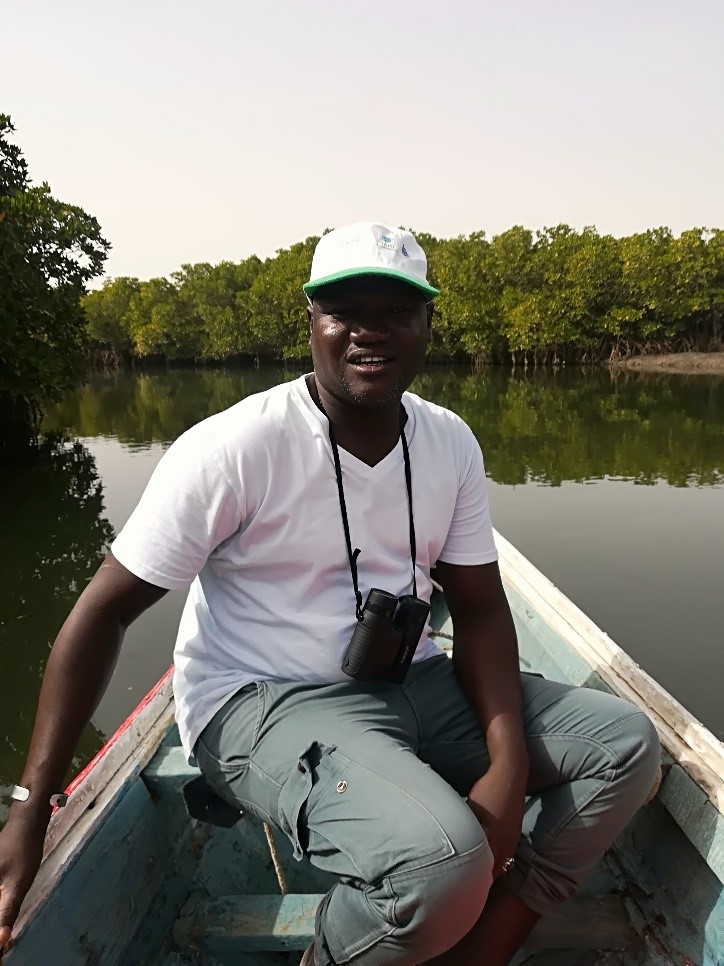Interview with Ousseynou Diouf, President of the management committee of the Gandoule AMP in Senegal
Published on 24 June 2021
- Can you briefly tell us about the reserve?
The Gandoule Community Marine Protected Area was created in 2014, with an initial area of 15,732 ha. Its surface was extended in 2021 to 28,121 ha. It’s located in the Saloum Delta Biosphere Reserve (RBDS). The hydrology is made up of the Saloum river and the Diomboss. Its flora is made up for the most part by specific mangrove ecosystems. As for its fauna, we observe mammals (dolphins, African manatee, spotted hyena…) birds (flamingos, terns, cormorants, Goliath heron, gulls…). Among its governance bodies, we have a management committee made up of local actors from the 04 municipalities adjacent to the Site. The Senegalese government has also made available a team of agents to monitor and manage the site on a daily basis with the management committee.
2. Thanks to a presidential decree, the AMPG has almost doubled in size this year, how did you manage to work with the new municipalities concerned?
The stakeholders from the three communes which joined the extension are already integrated, with the support of the PPI / FFEM, in the management committee during the renewal of the members on October 2, 2020 (municipality, citizen, fishermen, women). This took the form of a strong exercise in pedagogy and consultation. These stakeholders already occupy strategic positions (Vice-presidency, treasurer, secretary general, partnership commission, etc.). Still with the support of PPI / FFEM, we identified priority conservation sites with local stakeholders. Today, the MPA administration has assigned three officers to supervise the extension zone for better site management. Prospects for the development of income-generating activities and the development of ecotourism are planned to support local communities in alleviating pressure on resources.
3. You welcomed three other CSOs beneficiaries of the PPI last February during an exchange seminar, what prospects for collaboration do you see possible after the PPI?
Already, each beneficiary CSO, with the support of the PPI, has been able to set up activities aimed at the conservation of biological resources. The first step is to make exchange visits to share on the best results obtained by CSOs or to make short documentary films that will be made available to each CSO. Then, to maintain our relations with the PPI, so that together we can set up an inter CSO project for the benefit of biodiversity conservation in our MPAs and peripheries. We also hope to share with our government the realities on the ground so that they can make relevant legislative and budget decisions. We can use the protected area administrations for that. What will be able to maintain our relations.
4. More personal question: how did you decide to become chairman of the management committee and what motivates you?
I have long supported, voluntarily, the development of the municipality of Djirnda before the creation of the AMPG. Thus, I was part of the Council of Animators for the Development of the municipality of Djirnda (CADD). Indeed, it is the local communities themselves who have chosen me. This can be explained by the proximity of the actions (gender approach, training, support for economic activities, etc.) of the CADD. The stakeholders renewed their confidence in me during the renewal of the members of the management committee last October. My goal is to contribute to the sustainable management of natural resources in the four municipalities.
5. What advice would you give to protected area management committees in West Africa or to people living near protected areas?
What is more important in your local associations is consultation in all decisions and the obligation to report on the activities of the management committee to members and to the communities bordering the site. Because of the multiple challenges linked to conservation and the need to make your contributions to meeting the basic human needs of communities, your management committees must play, with the support of decentralized technical services, the propelling role of supporting socio-economic and environmental development by forging partnership relations with NGOs. Based on this, develop local initiatives for auto-financing in favor of conservation.For local residents, their role is to participate in the sustainable management of the natural resources of their land and to support initiatives in this direction.
